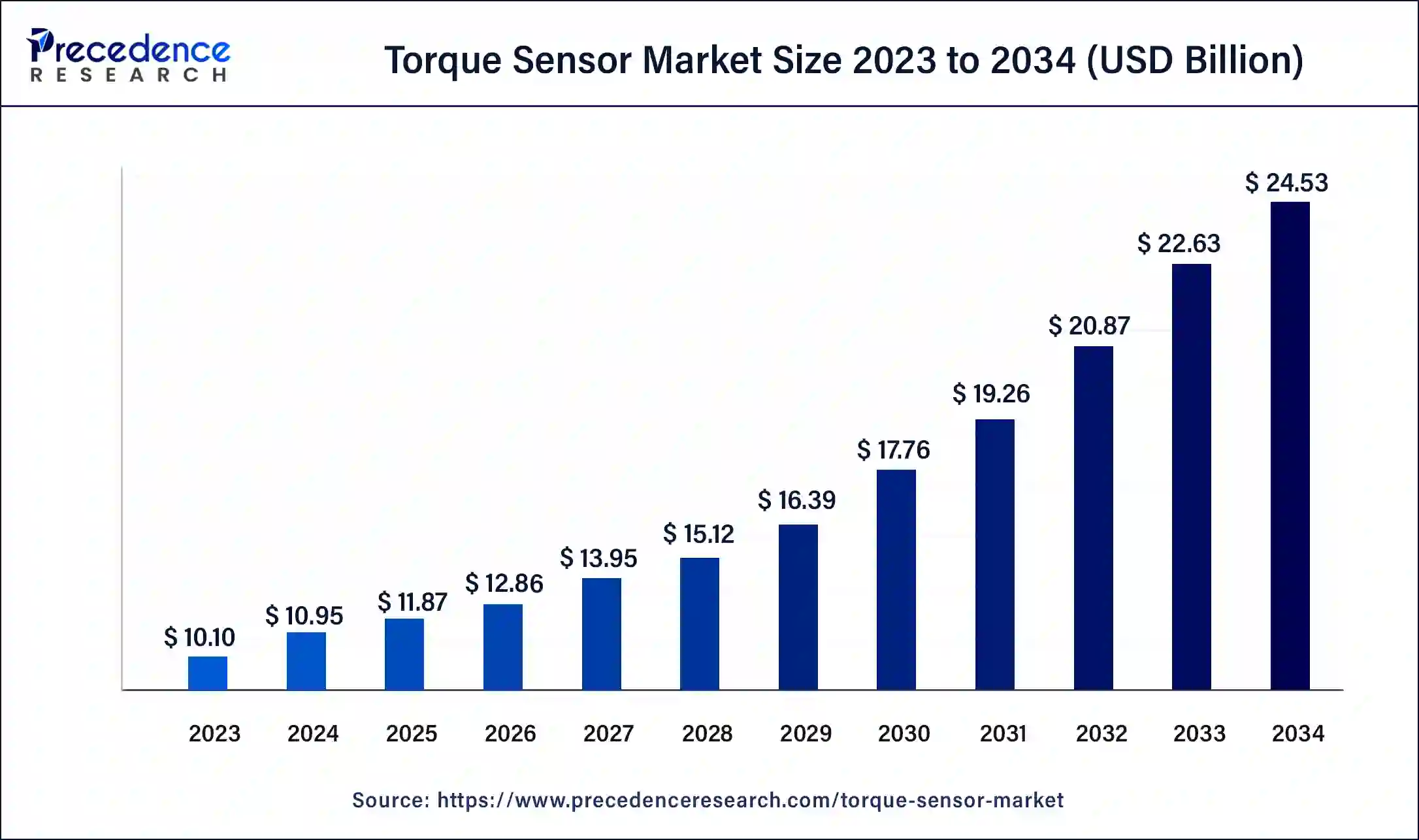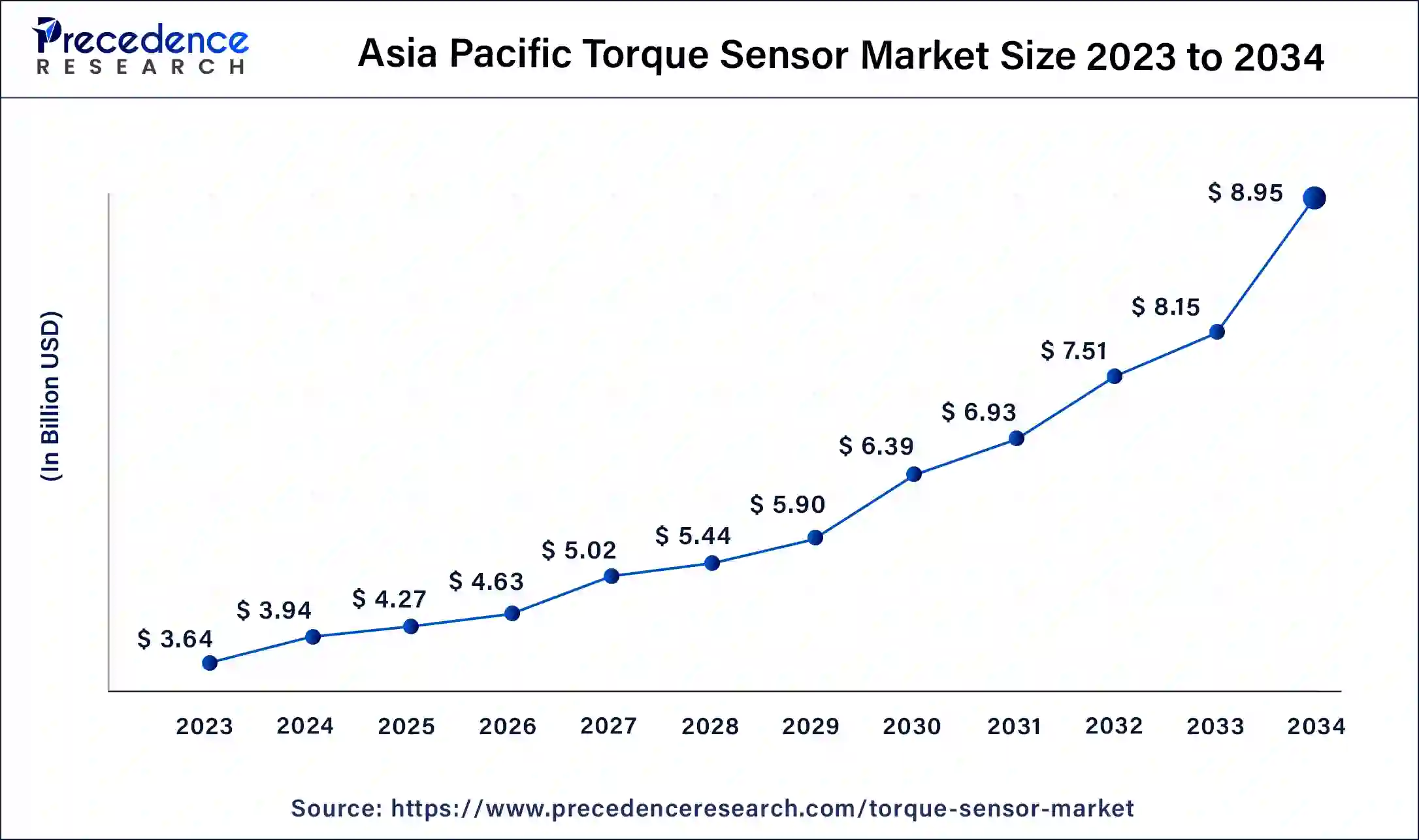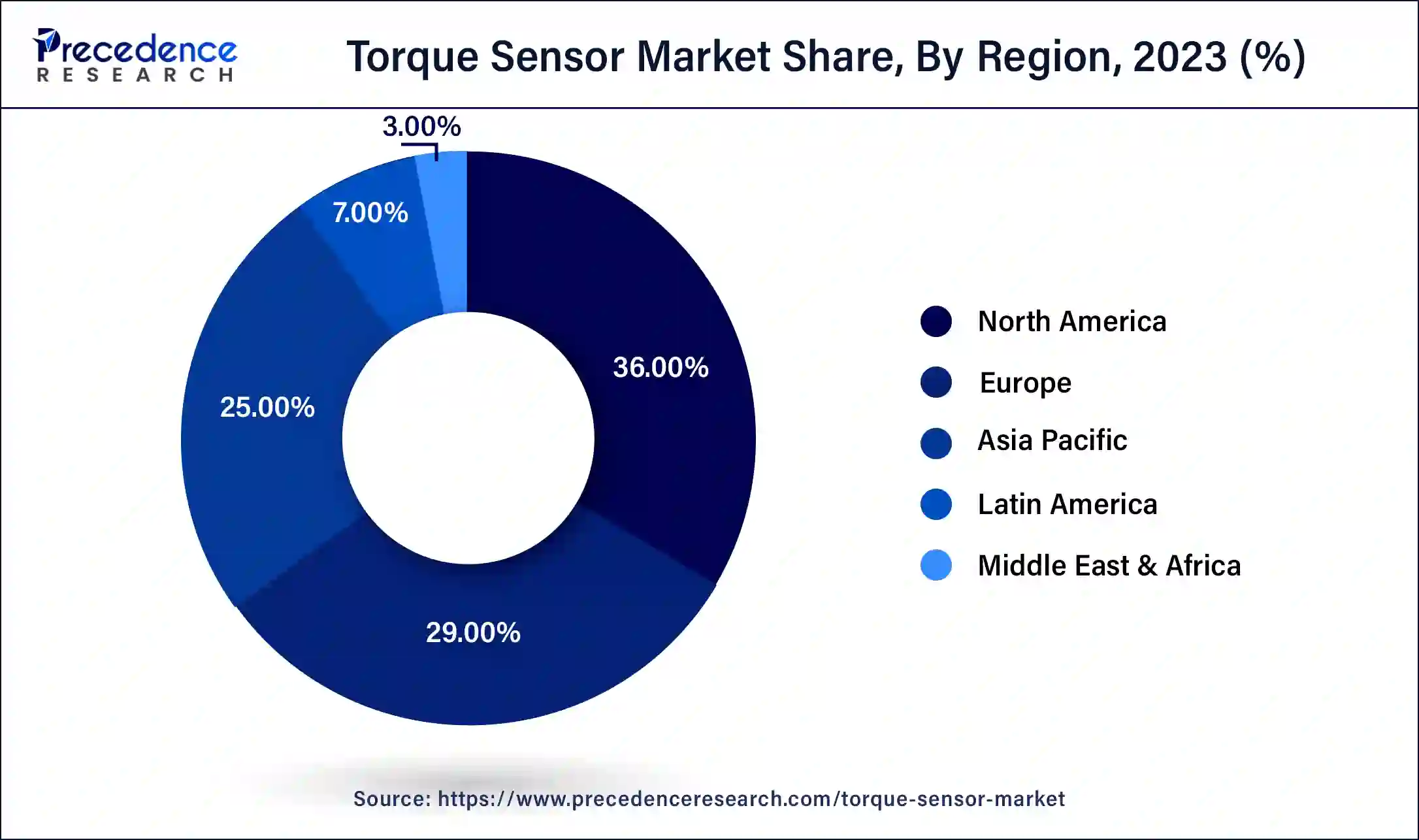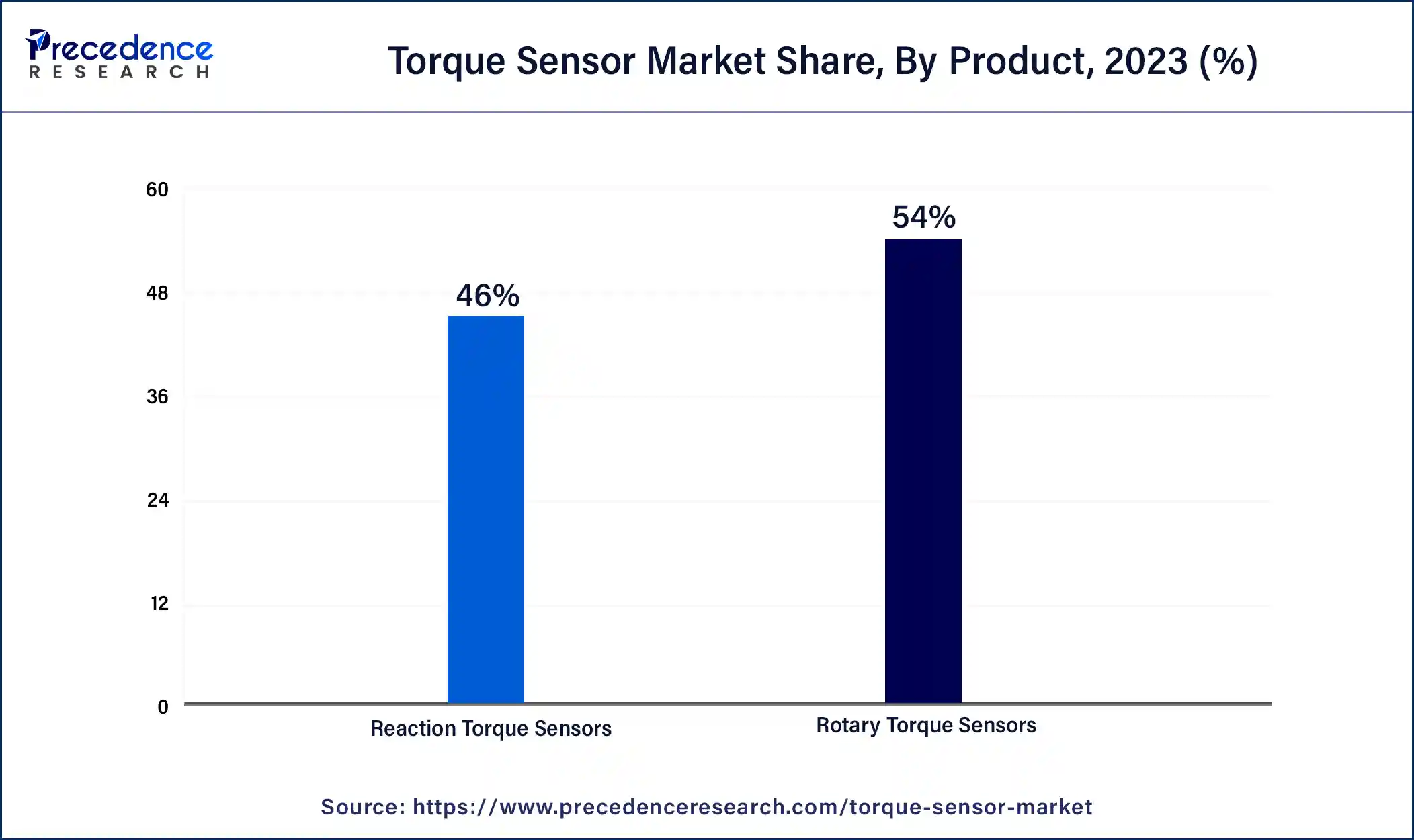February 2025
The global torque sensor market size was USD 10.10 billion in 2023, calculated at USD 10.95 billion in 2024 and is expected to be worth around USD 24.53 billion by 2034. The market is slated to expand at 8.40% CAGR from 2024 to 2034.
The torque sensor market size was estimated at USD 10.10 billion in 2023 and is projected to grow to USD 24.53 billion by 2034, rising at a compound annual growth rate CAGR of 8.40% from 2024 to 2034. The increasing demand for automobile, aerospace, and robotic sectors, rising investments, and government policies drive the torque sensor market.

The asia-pacific torque sensor market was estimated at USD 3.94 billion in 2024 and is projected to grow to USD 8.95 billion by 2034, rising at a compound annual growth rate CAGR of 8.52% from 2024 to 2034.

Asia-Pacific held the largest share of the market in 2023. The rapid growth in the manufacturing industry potentiates torque sensor market growth. The torque sensor is used in the manufacturing industry to measure the torque applied to different components during assembly. China is the global leader in the manufacturing sector. China contributed around 35% of the global gross production in 2023. Additionally, India and South Korea are amongst the top five countries with the highest gross production globally, with a 3% contribution each in 2023. This surge is due to the Indian government’s “Make in India” policy to boost the country’s manufacturing sector. Additionally, the rising automobile sector augments the market. Chinese automakers account for more than half of the electric vehicles produced in the world.
North America is observed to grow at the fastest rate in the torque sensor market during the forecast period. The rapid growth in the aerospace sector drives the market growth. The increasing investments, state-of-the-art R&D, and presence of key players also boost the market. Countries like the US and Canada are at the forefront of potentiating the market. The United States is the leading nation in the aerospace sector globally.

Also, Canada is ranked in the top 5 countries globally across civil flight simulators, engines, and aircraft segments. The torque sensor market is also driven by rapid growth in the automobile, medical, and robotic sectors.
A torque sensor measures the torque applied to a rotary shaft by converting the torque into an electrical signal. Torque sensors are generally of two types: reaction and rotary. The reaction torque sensor measures static torque, and the rotary torque sensor measures dynamic torque. These sensors are used to control the speed of motors, monitor the functioning of machinery, and guarantee the safety of industrial processes. Hence, they can be used to identify any potential defect and optimize the performance of the system. This facilitates improved efficiency and reduced running costs over time. They determine the condition and performance of many mechanical measurement systems like pumps, rotational cutting equipment, gearbox shafts, vehicle axles, and electric motors. They are also used to develop new technologies and improve existing ones by monitoring the performance and behavior of the systems. The torque sensors are commercially used in the aerospace, automobile, manufacturing, robotics, and medical industries.
How Can AI Revolutionize the Torque Sensor Market?
Integrating artificial intelligence (AI) into torque sensors can boost their functionality, turning them into smarter and more effective components. AI can be used to analyze data obtained from sensors, providing more accurate and faster outcomes. AI with torque sensors can predict a machine’s performance and suggest measures for its repair and maintenance. Neural-network-based calibration methods can calibrate force/torque sensors to accurately interpret the relationships between sensor readings and their represented outputs. AI can also facilitate contact detection, terrain classification, object recognition, and robust grasping.
Furthermore, AI can be integrated into the manufacturing process of torque sensors to enhance efficiency and reproducibility and incorporate automation. AI can potentially benefit supply chain management by planning and optimizing supply chain activities. Hence, the use of AI can help enterprises become more resilient and sustainable, thereby providing cost-effective solutions.
| Report Coverage | Details |
| Market Size by 2034 | USD 24.53 Billion |
| Market Size in 2023 | USD 10.10 Billion |
| Market Size in 2024 | USD 10.95 Billion |
| Market Growth Rate from 2024 to 2034 | CAGR of 8.40% |
| Largest Market | Asia Pacific |
| Base Year | 2023 |
| Forecast Period | 2024 to 2034 |
| Segments Covered | Product, Technology, Application and Regions |
| Regions Covered | North America, Europe, Asia-Pacific, Latin America and Middle East & Africa |
Demand for miniature torque sensors
The demand for miniature torque sensors is increasing rapidly with the growth of different manufacturing industries. Miniature torque sensors are small sensors that measure torque in mechanical systems. These sensors can provide real-time measurements of torque and are hence used in quality control to optimize product quality. It can optimize motor performance, leading to improved efficiency, longer lifespan, and reduced maintenance. They are commonly used in test bench applications, screwdriver calibration, and twist measurement. Other potential applications of miniature torque sensors include tire braking and friction-skid test measurement. Hence, they have diverse applications in producing and designing automotive and vehicle components, machines and lab equipment, robotics, medical devices, and in testing the viability, durability, and safety of consumer products.
Torque sensors have posed challenges in the automotive sector. The primary challenge is the higher price of a torque sensor e-bike. The advanced sensor technology and integration make the price higher, limiting the affordability to a larger consumer base. The next challenge is the high rotational speeds of electric drives in vehicles, creating a challenge for the torque measurement technology. Another challenge is the measurement of torque in CV (constant velocity) joints due to space constraints.
Rising Demand for Robotics
Torque sensors are potentially used in diverse industries. However, their use and demand in collaborative robotics are escalating. Rapid industrialization has increased the demand for robotics globally. The most common application of torque sensors in robotics is the angle measurement of a typical robotic arm. A robotic arm assists in material handling, inspection, and picking and placing applications. Torque sensors can also measure the torque of the motor and gearbox within the joint unit of a cobot. Hence, they lead to safer and more reliable robotic systems with increased worker safety.
The U.S. companies are heavily investing in robotics to boost productivity. The International Federation of Robotics provided a detailed analysis of the use of industrial robots based on applications, customer industries, types of robots, and other technical aspects. The industrial robot density i.e. number of robots per 10,000 employees in the manufacturing industry of 40 countries was compared and reported. The Republic of Korea reported the highest number of industrial robots in the manufacturing sector.
The rotary torque sensors segment held a dominant presence in the torque sensor market in 2023. A rotary torque sensor is a torque transducer that measures the torque of a rotating system. It measures torque by connecting to the object that is receiving the torque and the object itself. The electrical signal is transmitted to the measurement equipment via slip rings or electric induction, providing real-time data. They not only measure torque but also give idea about position and rpm feedback. The rotary torque sensor is used in sectors that require accurate control and optimization of their processes. Hence, they are used in a wide range of applications, from robotics and automation to renewable energy sources.

The reaction torque sensors segment is expected to grow at the fastest rate in the torque sensor market during the forecast period of 2024 to 2034. Reaction torque sensors are the sensors that measure the torque of a static system or non-rotating shaft. They are cost-effective and require fewer considerations. Unlike the rotating torque sensor, the reaction sensor does not require rpm considerations. These sensors are widely used in process control and testing. Hence, it can provide information about product consistency, performance, safe operating limits, maximum loads, and breaking points. They are also used in manufacturing industries, such as steel and paper. Furthermore, they are used in rolling mills to measure load and hence material properties.
The strain gauge segment registered its dominance over the global torque sensor market in 2023. A strain gauge is a technology that measures the strain on a given object. It is widely used in torque sensors as it is a reliable, stable, sensitive, robust, and cost-effective torque measurement method. Another advantage is that it can be applied to any shaft without any shaft modification. They are employed in all types of torque sensors and used on drive shafts of power plants, refineries, fans, turbines, etc. It has a huge potential in the aerospace, automotive, rail, maritime, medical, and household applications.
The automotive segment led the global torque sensor market in 2023. Torque sensors are widely used in the automotive sector. They are used to measure torque produced by the engine to track its performance. They also measure the torque generated from the steering wheel. Additionally, they are used to test clutch, gearboxes, powertrain, brake, and suspension systems. The horsepower is measured to improve fuel efficiency. The rapid growth in the automobile sector and increasing demand for electric vehicles drive the market. The market is also driven by the increasing global investment in automobile R&D in the automotive industry.
The test & measurement segment is anticipated to grow with the highest CAGR in the torque sensor market during the studied years. The test & measurement sector provides tools that analyze, test, measure, display, and record electrical data. Torque measurement is used in the test and measurement to monitor the force required to open child-proof containers, calibrate torque wrenches, and determine fastener breaking torque. In materials testing, torque can even predict the onset of plastic deformation.
By Product
By Technology
By Application
By Geography
For inquiries regarding discounts, bulk purchases, or customization requests, please contact us at sales@precedenceresearch.com
No cookie-cutter, only authentic analysis – take the 1st step to become a Precedence Research client
February 2025
August 2024
November 2024
October 2024